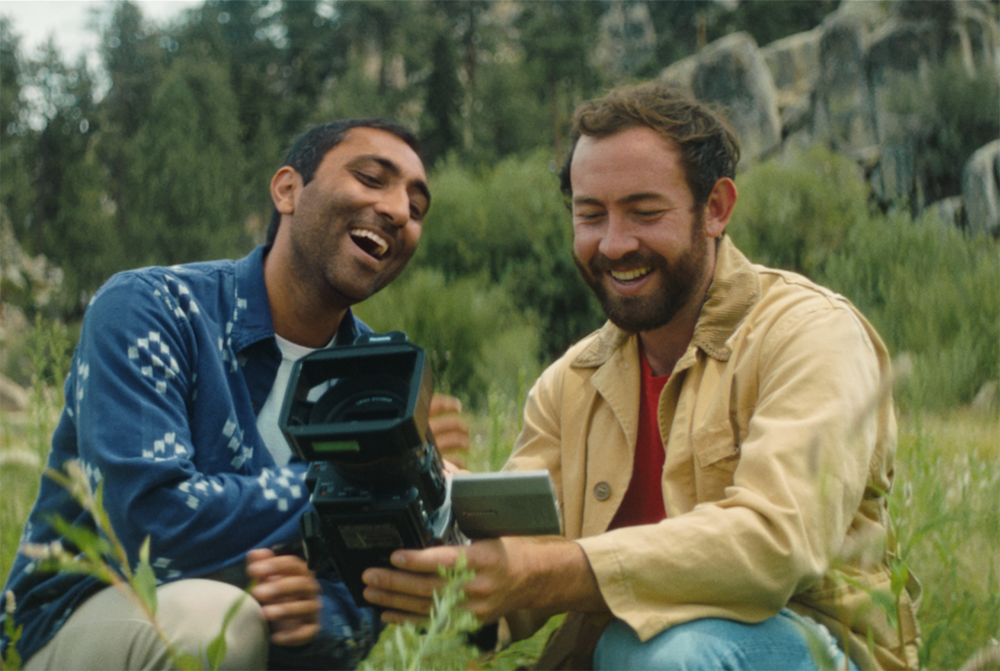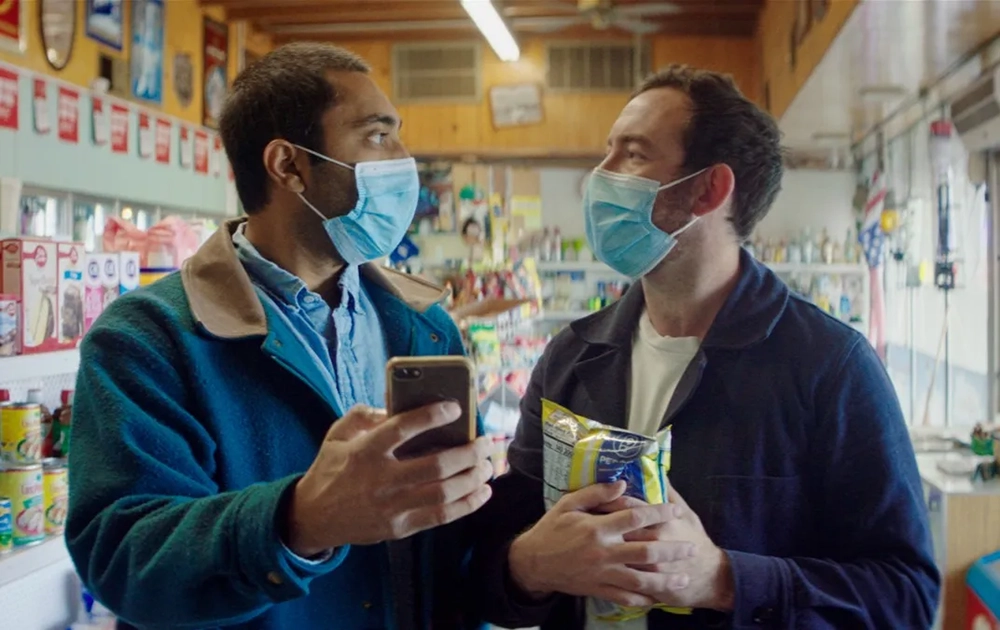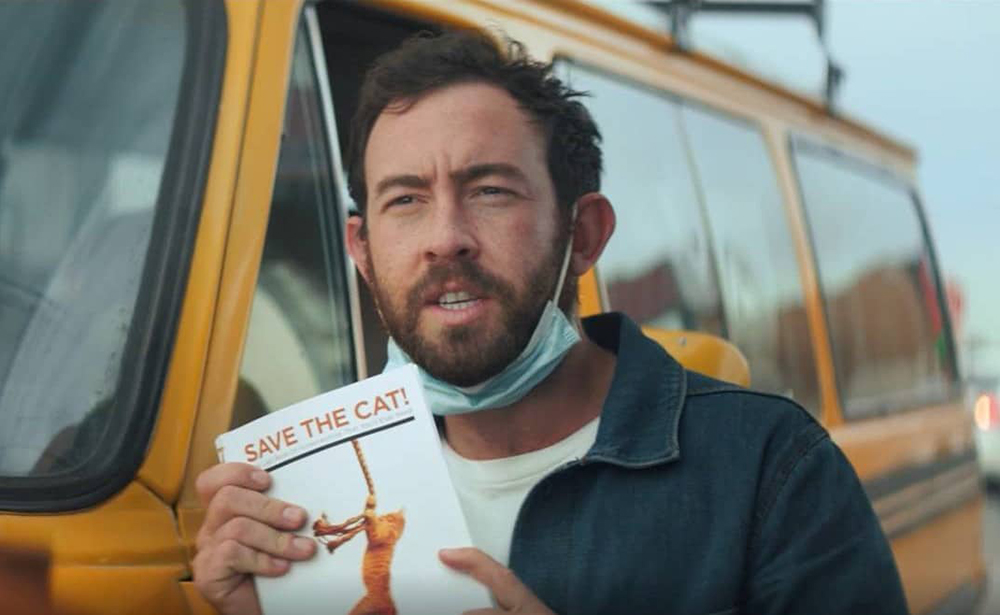With its premise basked in comedy, set against the foreboding backdrop of Covid-19, “Wes Schlagenhauf is Dying” world premiered at this year’s Tribeca Festival. The eccentric comedy was featured in the ‘Narrative Competition’ category.
According to the film’s PR company, the comedy follows a group of friends after Wes contracts Covid-19. His friends and aspiring filmmakers Parker and Devin decide to travel to Wes’ Idaho home and catalog the journey along the way in hopes of creating an indie movie success. The film stars Devin Das, Parker Seaman, and Wes Schlagenhauf.
Here at The Movie Buff, we had the pleasure of speaking to the film’s editor, Ian Skalski, about working on the film, attending Tribeca, and more. Ian worked closely with Parker Seaman, the film’s director. He also sifted through raw footage for months in order to find the right parts for the film and put the comedy together. Additionally, Ian has worked for multiple shows and commercials, as well as being a Staff Editor for “Funny or Die.” Skalski also edited the film “Keeping Company,” which was released shortly after Tribeca Festival on VOD.
Following is our interview with Ian, who spoke to Arpit Nayak, Staff Critic. You can find out more about “Wes Schlagenhauf is Dying” on IMDb here.
So, the film industry is something not many people choose to pursue naturally. What inspired you to choose editing, and can you tell us a bit about your journey so far?
Ian Skalski: I started editing in high school and it felt very natural. One of my first jobs was for Dave Stewart from the Eurythmics doing music videos and music documentaries. After that, I worked as a staff editor at FunnyorDie.com and have been freelance ever since. I now edit TV series, movies, and commercials.

Could describe the work of an editor in a simple way for a general audience? What is it like?
IS: Editing is like doing a puzzle…except there are 1000s of extra pieces and the picture on the box is constantly changing.
Another thing that we love to know is, how you would trim film segments to specified lengths. Also, how do you reassemble segments in sequences that present stories with maximum effect? And do these changes as per the genre of the film?
IS: I think a good editor can really cut anything. I don’t believe in ‘comedy editors’ or ‘drama editors’. If you’re good, you’re good!
Could you share a little bit about your latest film, “Wes Schlagenhauf is Dying” and how you became involved?
IS: “Wes Schlagenhauf is Dying” is a film about two friends who find out one of their best friends, Wes, who moved away, has contracted Covid-19. They send him a cameo message from Mark Duplass that ends up inspiring the duo to visit Wes and document their journey as an attempt to make the next great indie film.
I’ve known the director, Parker Seaman for a while, so he sent me the first draft of the script. After I read it, I told him I wanted to cut it. It’s a movie made by friends, about friends making a movie.

So, I saw this one scene titled the “Craigslist montage” and I found it really interesting. Can you tell us a bit about the editing process of that scene?
IS: This scene kicks in right after the title, so it really springboards the whole film into action. The characters Parker and Devin get an idea to make a movie about their journey to go see their friend Wes. So they go on Craigslist to find a camera, a car, and some maps. The scene is a quickly edited compilation of visuals of computer browsing, meeting with sellers and VO phone calls.
The first step was the song. Our composer Koda made a great track very early on so I then cut the VO of the two guys calling to the music. The VO has a sing-song kind of rhythm which adds a special quality to the scene. The director Parker and I then made posts on Craigslist of the various items and screen-recorded browsing and clicking through them. After that, I started cutting and editing it all together. Parker and I sat in the editing bay perfecting the sequence. And then as it got closer and closer we passed it back and forth a few times until it felt just right.
Can you explain methods you have found effective to set up and operate computer editing systems, electronic titling systems, video switching equipment, and digital video effects units to produce a final product?
IS: First, I’d recommend using fast hard drives. A lot of people blame a slow project on the computer but it’s actually usually a hard drive speed issue. I also use a Razer Naga 16-button mouse that has completely changed how I edit. The mouse has 12 side buttons, so I’ve mapped shortcuts on each one and then set them up to be the same between all programs. It makes jumping between Premiere, Avid, and Resolve very easy.
I am sure many people will love to know the difference between a jump cut versus a match cut?
IS: A jump cut is when you cut out a segment of a single shot. So if a person is walking left to right and you cut out the middle it would look like they jumped across the screen. The jump cut is one of the first tricks in cinema. George Méliès’ would do amazing things with them.
A match cut is cutting from one shot to another where the action or composition is matched. A wonderful example of this is the music video “Daydreaming” by Radiohead. It’s a simple technique that can be used in so many ways. The new movie “Everything Everywhere All at Once” has next-level match cuts.

Often when working on the film, it can be difficult to stay objective – cutting the non-essential moments and honing in on only the best ones. How did you approach this challenge? Were there any moments or films that were particularly hard to part with?
IS: At the end of the day (or editing process) if you’re still engaged with something after watching it a hundred times, then it’s probably working and that acts as a confirmation that everything else that didn’t make the cut can really go. While editing “Wes Schlagenhauf is Dying” there were lots of little moments that we lost along the way that I miss, but nobody else will. So nothing that was too painful to cut in this movie.
Can you tell us about what happiness means to you as an editor and as a person?
IS: As an editor, happiness is getting all the footage you need and then having scenes that effortlessly cut together. As a person, happiness is finding the perfect work/life balance of projects I’m deeply passionate about and plenty of time to spend relaxing with my hobbies and the people I love.
If you could give some tips to young filmmakers – editors out there what it will be?
IS: After you watch a movie or show that you really like, break it down cut by cut so you can backward engineer why it was working for you. And of course, learn all the tools and work with lots of people.

